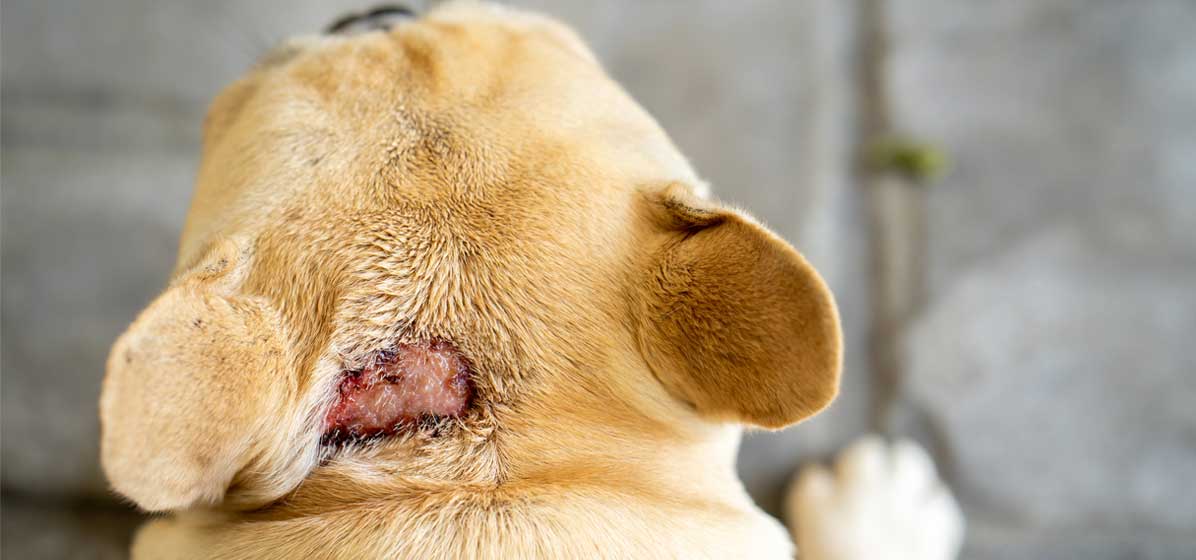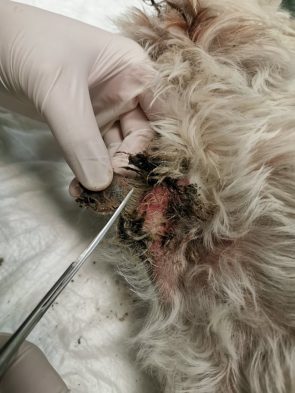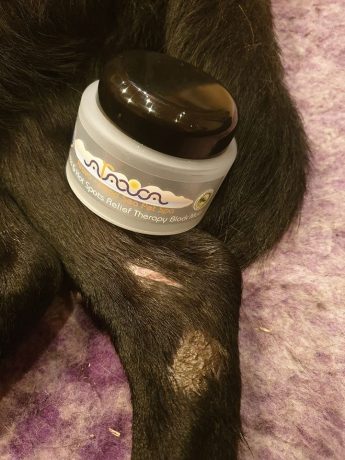
It is most commonly seen on the head, neck, lower back, and tail. Wet dermatitis can occur at all ages in all breeds – but it is true that long-haired dogs and those with a dense undercoat (Labradors, Golden retrievers, Bernese Mountain Dogs, Newfoundlanders, …) are more prone to it.
They most commonly occur in the summer months.
Inflammation is accompanied with stinky, thick, yellow discharge, hair on the wound and around it is sticked together. The skin later becomes hard, hairless, covered with scabs.
The causes are different: bacteria, fungal infections, fleas, mites, insect bites, allergies, …
This dermatitis has a very rapid course, so it is really important that we discover it quickly, otherwise a small wound can became a large one in just a few hours or days.
The affected area should be shaved, cleaned and dried. Usually we use the appropriate antiseptic shampoos and aqueous solutions of iodine. The Dead Sea mud is also very good, as it has antiseptic properties.
It is also necessary to prevent the dog from licking and scratching the wound so that the inflammation does not worsen.


Photo: Veterinary clinic Animavet






